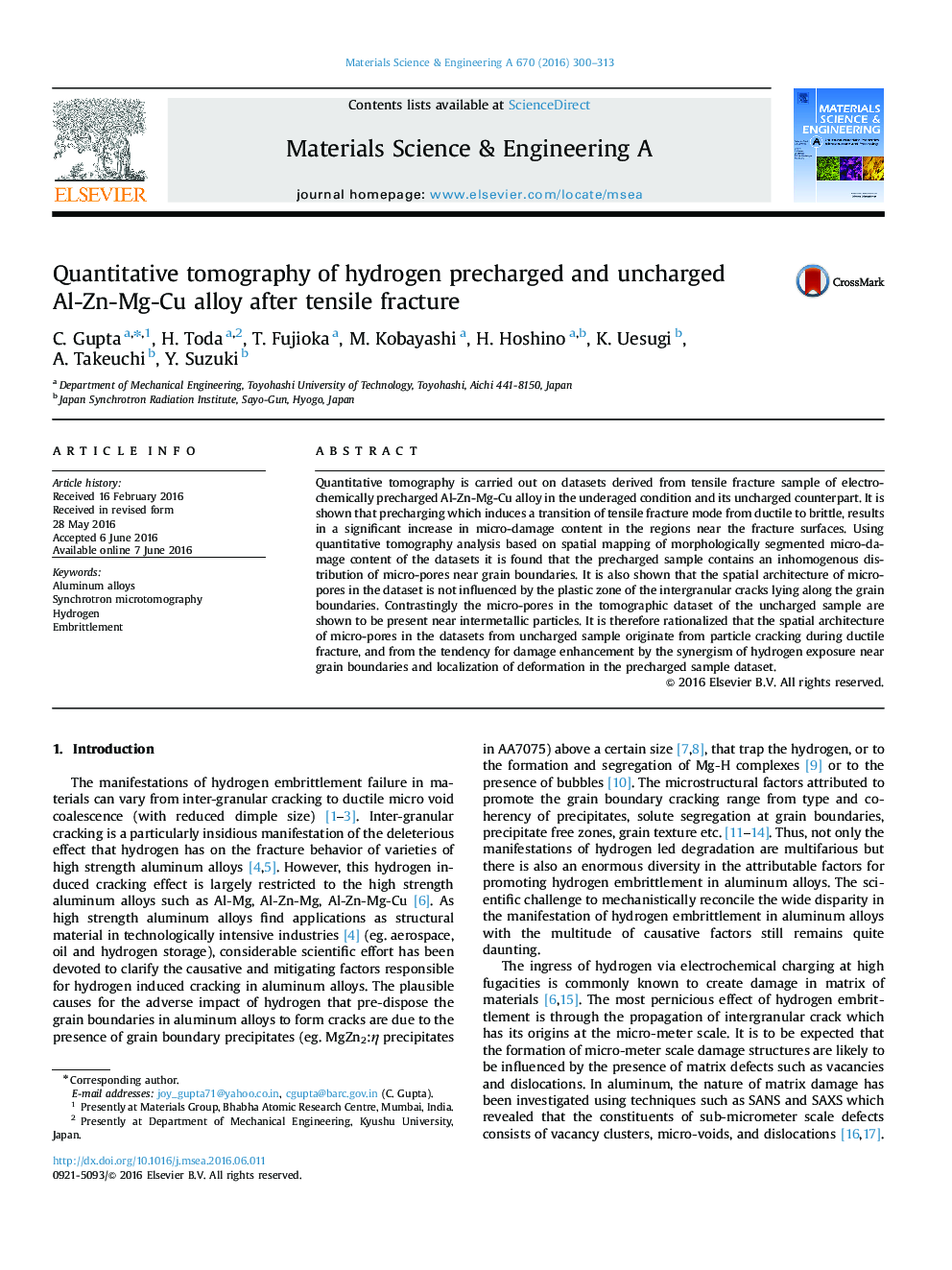| Article ID | Journal | Published Year | Pages | File Type |
|---|---|---|---|---|
| 1573092 | Materials Science and Engineering: A | 2016 | 14 Pages |
Abstract
Quantitative tomography is carried out on datasets derived from tensile fracture sample of electrochemically precharged Al-Zn-Mg-Cu alloy in the underaged condition and its uncharged counterpart. It is shown that precharging which induces a transition of tensile fracture mode from ductile to brittle, results in a significant increase in micro-damage content in the regions near the fracture surfaces. Using quantitative tomography analysis based on spatial mapping of morphologically segmented micro-damage content of the datasets it is found that the precharged sample contains an inhomogenous distribution of micro-pores near grain boundaries. It is also shown that the spatial architecture of micro-pores in the dataset is not influenced by the plastic zone of the intergranular cracks lying along the grain boundaries. Contrastingly the micro-pores in the tomographic dataset of the uncharged sample are shown to be present near intermetallic particles. It is therefore rationalized that the spatial architecture of micro-pores in the datasets from uncharged sample originate from particle cracking during ductile fracture, and from the tendency for damage enhancement by the synergism of hydrogen exposure near grain boundaries and localization of deformation in the precharged sample dataset.
Related Topics
Physical Sciences and Engineering
Materials Science
Materials Science (General)
Authors
C. Gupta, H. Toda, T. Fujioka, M. Kobayashi, H. Hoshino, K. Uesugi, A. Takeuchi, Y. Suzuki,
